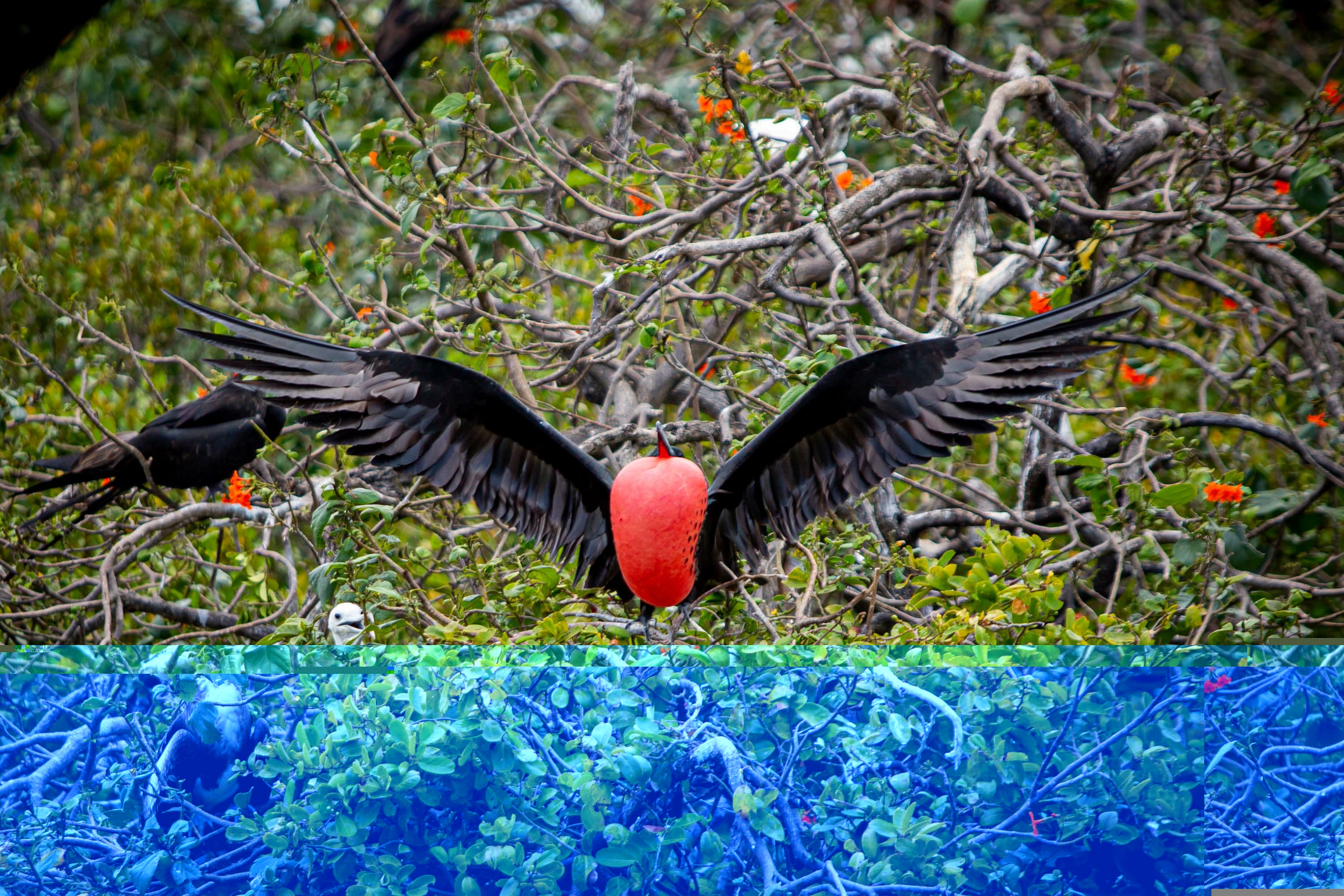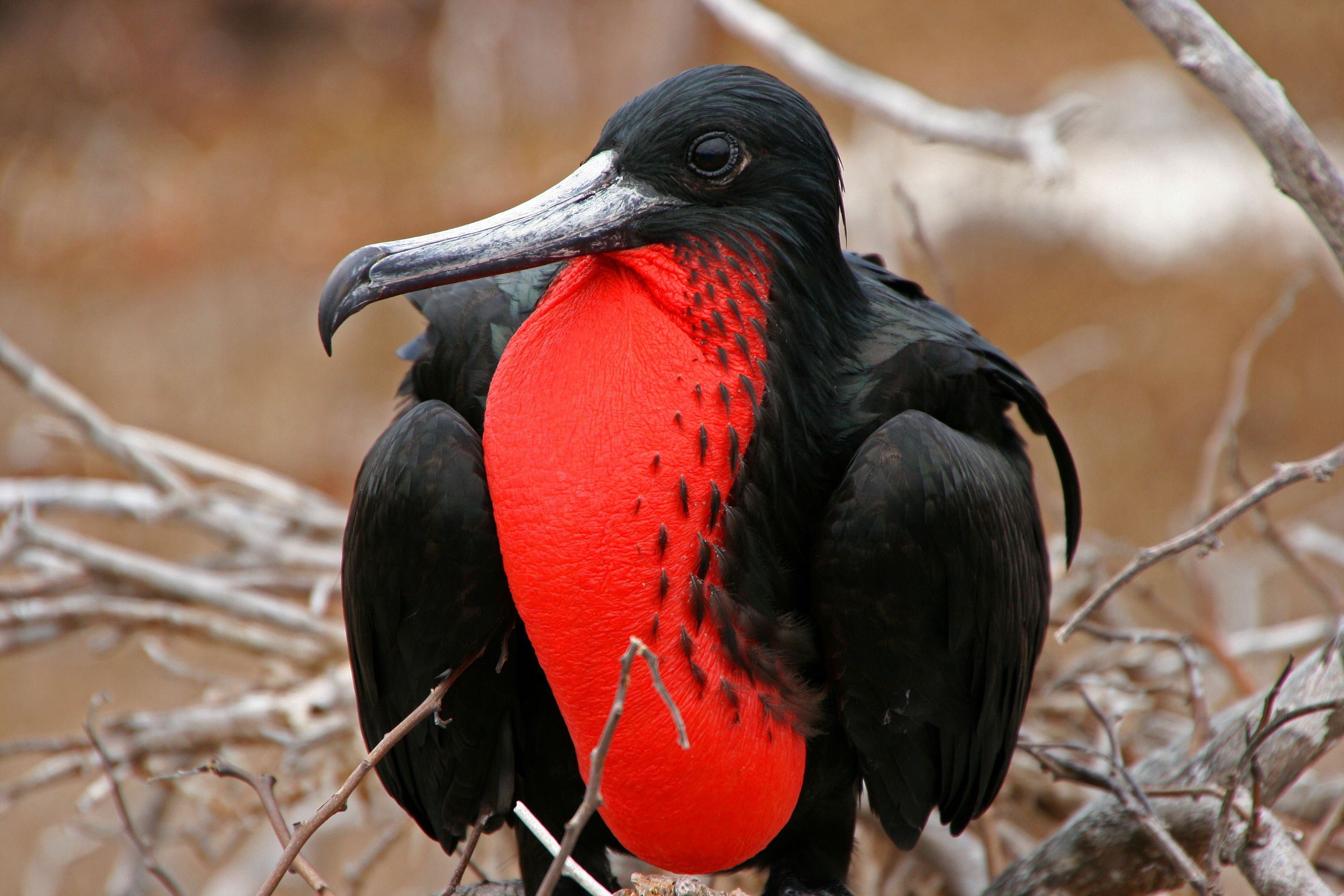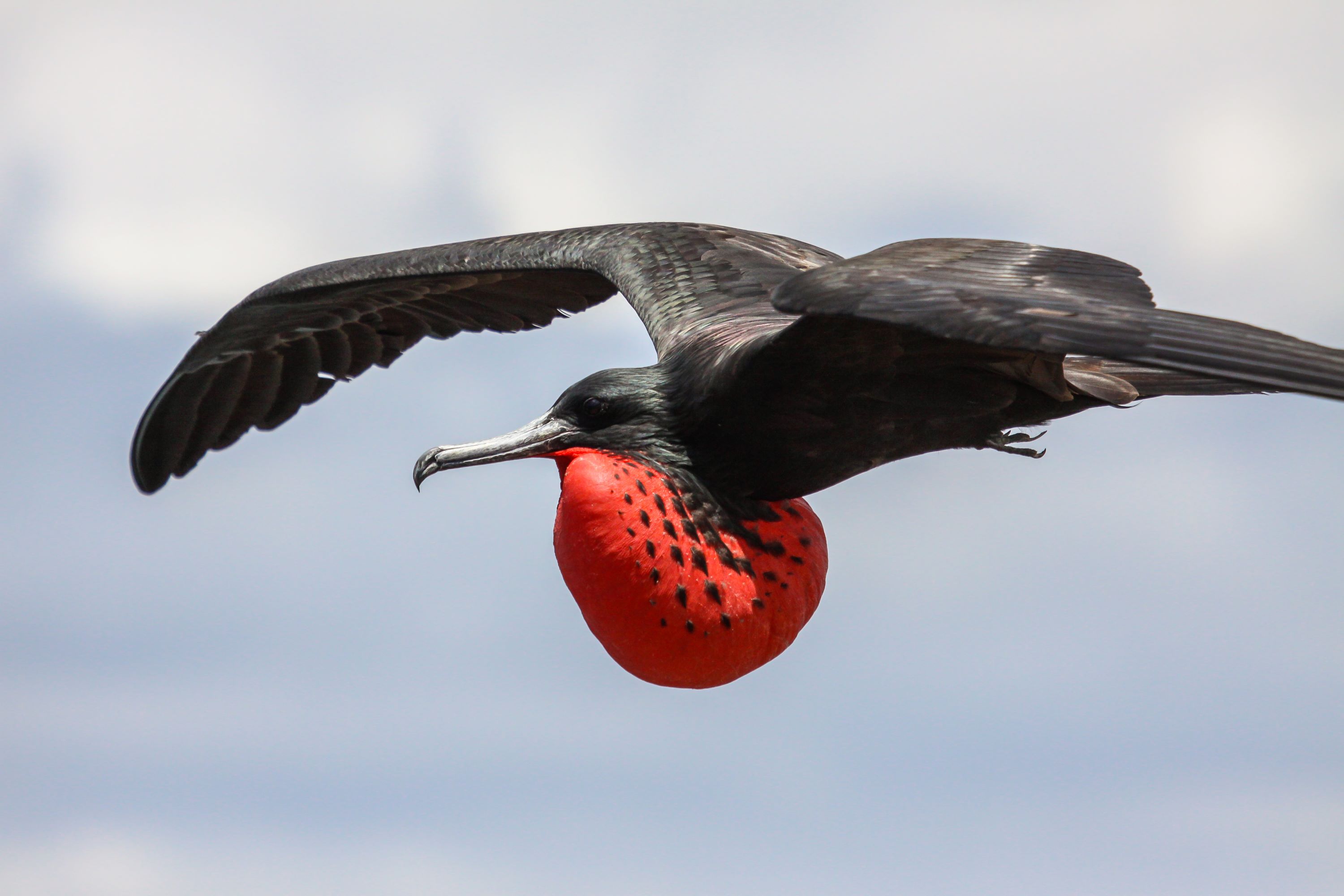
Family Fregatidae: The Soaring Seafarers of the Skies
Introduction to the Family Fregatidae
The Family Fregatidae, commonly known as frigatebirds, encompasses a small yet remarkable group of seabirds. These birds are renowned for their extraordinary aerial abilities, distinctive mating displays, and unique ecological role in marine ecosystems. Found across tropical and subtropical oceans, frigatebirds are a symbol of the open sea's mystery and freedom. The five species are classified in a single genus, Fregata.
Physical Characteristics of Fregatidae
Frigatebirds are large birds with striking physical features. They possess the longest wingspan relative to body size of any bird, which allows them to soar effortlessly for long periods. Typically, they have dark plumage, with males displaying a prominent red gular sac that is inflated during courtship. Females are generally larger and have white underbellies.
Adaptations for an Aquatic Life
Despite being seabirds, frigatebirds lack the ability to swim due to their small oil glands and low body fat. Their feathers are not fully waterproof, making landing on water a risk. These adaptations necessitate their exceptional flying skills and a lifestyle predominantly spent in the air, only landing to rest or breed.

Habitat and Distribution
The Fregatidae family is widespread across tropical and subtropical oceans. They are typically found in coastal regions, often nesting on remote islands. While at sea, they are adept at riding thermals and can travel vast distances with minimal effort.
Diet and Feeding Behavior
Frigatebirds primarily feed on fish and squid, plucked from the ocean surface or obtained through kleptoparasitism — a behavior where they harass other seabirds until they drop their prey or regurgitate food, which the frigatebirds then snatch in mid-air. This unique feeding strategy showcases their opportunistic nature and aerial agility.
Breeding and Reproductive Behavior
Frigatebirds have elaborate and visually striking courtship rituals. Males inflate their red gular sacs and perform various displays to attract females. They are colonial breeders, with large groups gathering on breeding islands. Nest building is a communal activity, with nests constructed from twigs and branches in low-lying bushes or trees.

Nesting and Incubation
A single egg is typically laid each breeding season. Both parents share the responsibility of incubation, which lasts about 50-60 days. The long incubation period is matched by an equally extensive period of chick rearing, necessitating strong parental investment.
Chick Rearing and Parental Care
Chicks are fed by both parents and are dependent on them for an extended period, often up to two years. This long dependency period is among the most prolonged of any bird species and is crucial for the survival of the chick in the challenging oceanic environment.
Conservation Status and Threats
Frigatebirds face several threats, including habitat destruction, pollution, and climate change. These factors can impact their breeding colonies and food availability. Conservation efforts are focused on habitat preservation, pollution control, and mitigating the impacts of climate change.
Conclusion: The Intriguing Family Fregatidae
In conclusion, the Family Fregatidae, with its unique adaptations and fascinating behaviors, plays a significant role in the biodiversity of marine ecosystems. These majestic seabirds, with their impressive wingspans and aerial prowess, continue to captivate and inspire. While sightings of frigatebirds in Utah are rare, their occasional presence highlights the vast migratory patterns and adaptability of these remarkable seabirds, reminding us of the interconnectedness of global ecosystems and the importance of conservation efforts to protect these avian marvels.